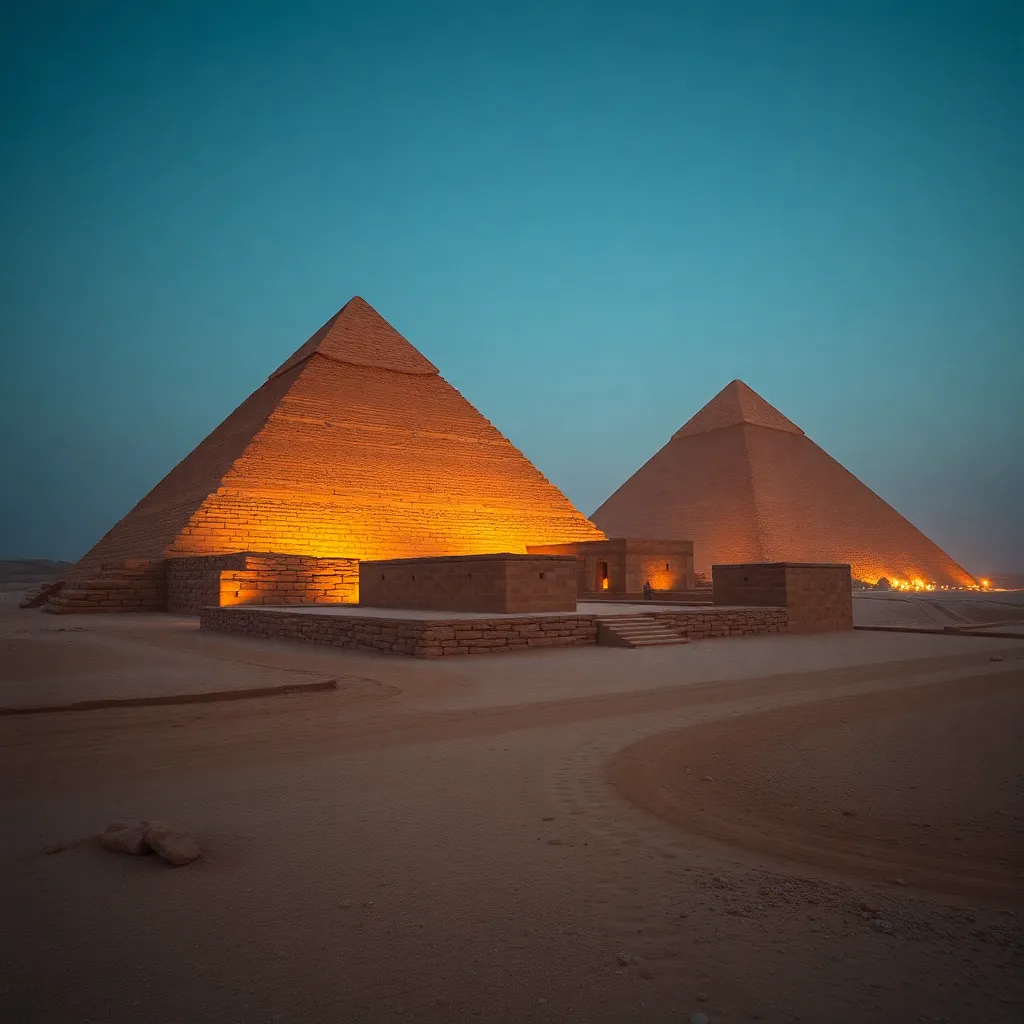Exploring the Lesser-Known Pyramids of Egypt
I. Introduction
Egypt is synonymous with its iconic pyramids, towering monuments that have fascinated historians, archaeologists, and tourists for centuries. While the Pyramids of Giza are often the centerpiece of discussions about ancient Egyptian architecture, numerous lesser-known pyramids offer a richer and more nuanced understanding of this remarkable civilization.
Exploring these lesser-known pyramids is crucial as they reveal diverse aspects of ancient Egyptian culture, construction techniques, and burial practices that are often overshadowed by their more famous counterparts. This article aims to delve into the historical context of these pyramids, highlight specific examples, and provide insights for travelers interested in exploring these monumental structures.
II. Historical Context of Pyramids in Egypt
The construction of pyramids in Egypt began during the Third Dynasty, marking a significant evolution in architectural design and burial practices. Initially, these structures served as elaborate tombs for pharaohs and high-ranking officials, embodying the ancient Egyptians’ beliefs in the afterlife.
Pyramid design evolved over time, transitioning from the step pyramids of the early dynasties to the smooth-sided true pyramids seen at Giza. This evolution signifies not only advancements in engineering but also shifts in religious beliefs and cultural practices.
- Historical Significance: Pyramids served as monumental markers of a pharaoh’s reign and as a means to ensure their immortality.
- Cultural Role: They were integral to ancient Egyptian cosmology, symbolizing the rays of the sun and the connection between the earth and the divine.
III. The Pyramid of Djoser: The First Step Pyramid
The Pyramid of Djoser, located in Saqqara, is one of the most significant examples of early pyramid construction. Built during the Third Dynasty for Pharaoh Djoser, this structure is recognized as the world’s first monumental stone building and the first step pyramid.
Architectural innovations such as the use of limestone and the development of the stepped design marked a departure from traditional burial mounds. This pyramid not only served as Djoser’s tomb but also represented a shift in burial practices, emphasizing the importance of the afterlife.
- Significance: The Pyramid of Djoser laid the groundwork for future pyramid construction, influencing later structures, including the famous pyramids at Giza.
- Burial Practices: Insights into burial practices during the Third Dynasty reveal a focus on preserving the body and providing for the pharaoh in the afterlife.
IV. The Unfinished Pyramid of Zawyet El Aryan
The Unfinished Pyramid of Zawyet El Aryan, located north of Giza, is a fascinating site that provides insight into the challenges faced during pyramid construction. This pyramid, attributed to Pharaoh Khufu (of Giza fame), was never completed, leaving archaeologists puzzled about its status.
Theories regarding its incomplete status include a change in the pharaoh’s plans, resource shortages, or a shift in political circumstances. Archaeological findings at the site, such as tools and remnants of construction techniques, offer valuable information about the pyramid-building process.
- Theories: Various theories suggest that the project may have been abandoned due to financial constraints or the death of the king.
- Archaeological Findings: Excavations have revealed construction tools, indicating a highly organized labor force and advanced techniques.
V. The Pyramids of Abu Sir
Located between Saqqara and Giza, the Pyramids of Abu Sir are lesser-known yet significant structures that showcase a different style of architecture compared to their more famous neighbors. Built during the Fifth Dynasty, these pyramids reflect a transitional phase in pyramid construction.
The architectural features of the Abu Sir pyramids, such as their smaller size and unique design elements, set them apart from the Giza pyramids. Recent archaeological discoveries, including burial chambers and inscriptions, shed light on the rituals and practices of the time.
- Distinct Features: The pyramids at Abu Sir are characterized by their smaller size, lack of extensive mortuary temples, and innovative construction techniques.
- Recent Discoveries: Archaeological efforts have uncovered significant artifacts that provide insights into the lives and beliefs of the Fifth Dynasty pharaohs.
VI. The Pyramid of Meidum: A Journey Through Time
The Pyramid of Meidum represents a fascinating chapter in the evolution of pyramid design. Initially built as a step pyramid, it was later transformed into a true pyramid during the reign of Pharaoh Sneferu, marking a significant architectural shift.
This pyramid’s design reflects the experimentation that characterized the era, with a unique transition from a step pyramid to a smooth-sided structure. Theories regarding its construction suggest advanced engineering skills and remarkable organizational capabilities.
- Design Transition: The transition from step pyramid to true pyramid illustrates the evolution of architectural techniques and understanding of structural integrity.
- Construction Theories: Scholars propose various theories about the construction process, highlighting the ingenuity of ancient Egyptian engineers.
VII. Visiting the Lesser-Known Pyramids: Tips for Travelers
For travelers keen to explore these lesser-known pyramids, several factors should be considered to enhance the experience:
- Accessibility: Many of these sites are accessible by car or local transportation, but it’s advisable to research routes and possible guided tours.
- Best Times to Visit: Early morning or late afternoon visits are recommended to avoid the heat and enjoy the sites with fewer crowds.
- Cultural Sensitivity: Respecting the archaeological sites and local customs is paramount. Always follow guidelines and preserve the integrity of these historical treasures.
VIII. Conclusion
Exploring the lesser-known pyramids of Egypt is not just an adventure; it is a journey into the depths of ancient history, revealing the complexities of a civilization that has shaped our understanding of architecture, culture, and spirituality.
These pyramids hold untold stories waiting to be uncovered, emphasizing the need for continued archaeological efforts and responsible tourism. As we delve into the rich tapestry of Egypt’s pyramids, we are reminded of the enduring legacy of this great civilization and the mysteries that still lie beneath the sands.




